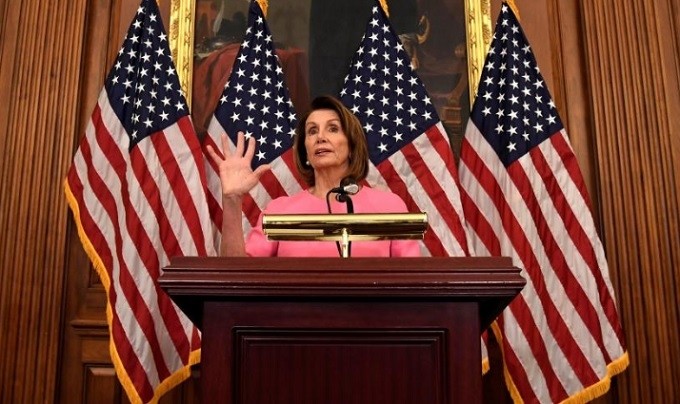The map of this year’s US midterm elections was evenly covered with the colours of red and blue, without the occurrence of the scenario in which the Republican Party’s “red tide” overwhelmed the Democratic Party’s “blue wave”, which would have helped the Republicans defend their control of the current bicameral Congress. The Republican side easily surpassed 51 seats to continue its control of the Senate but left the majority in the House of Representatives to the Democratic side. Reclaiming dozens of seats from the “Elephant”, the “Donkey” party has gained new power and resumed its control of the House of Representatives after eight years in the minority at this important legislative body.
It can be said that the newly announced election results are a tremendous victory for the Democrats after a lengthy loss of its legislative control. Thanks to its efforts to mobilise voters and strong competition, the Democratic Party has regained power in at least one legislative branch. During a victory celebration party, leaders of the Democratic side at the House of Representatives pledged to use the majority to pursue an effective bipartisan cooperation agenda, aiming to serve the country, which the “Donkey” side said has been “divisive enough”.
President Donald Trump and other Republican members still declared success in this year’s elections, but it is undeniable that the “Elephant” side has missed its core target. With the Democrats taking the majority at the House of Representatives, the remaining two years of President Trump’s term is predicted to be much more difficult than the first half of the tenure when the Republicans controlled both chambers of the Congress.
Considered as a “survey” about the policies and operations of the incumbent government, this year’s US midterm elections reflect the views of US voters on the controversial moves in the past two years of the presidential tenure, while providing an answer to the “test” of voters’ confidence toward the Trump administration.
Economic achievements can be seen as a bright spot. Under the leadership of President Trump in the past two years, the US economy has restored its positive and stable growth, with GDP growth reaching 3.2% in the third quarter of 2018 and the unemployment rate falling impressively by 3.7%. However, the economic highlights are not enough to overshadow debates over a series of policy decisions that have caused controversy in the US public opinion. The sensitive issues related to immigrants, violence and gun control have also heated up again, prompting psychological insecurity among the people.
In foreign affairs, despite the welcomed and historic diplomatic moves by President Trump such as the maiden summit between the US and the Democratic People’s Republic of Korea, the wave of “withdrawal policies” he used to remove the US out of many international agreements, commitments and obligations, has led the US to be criticised by the international community. The goals in President Trump’s “America First” policy has triggered skepticism about the US’s responsibilities and position in the world and in global issues.
The chaotic situation of the US along with the suspicion of the policy efficiency of the incumbent government, held by the Republican Party, offer an explanation for the voters’ support ballots for President Trump’s Democratic opponents. Thus, it can be said that the effort to take advantage and uphold the goal of restoring balance in the legislative system, towards resolving conflict and healing divisions aiming to limit the controversial policies, was part of the reason for the Democrats’ victory in this year’s midterm elections.
The new-tenure US Congress, set to convene its first meeting on January 20, 2019, will be bipolar, as the Republic Party and the Democratic Party each hold a legislative chamber. The power balance has been resumed, but the risk of divisions between the two sides is also waiting to appear in US politics. The elections warn of an outlook of “pull-about’ in the process of adopting important policies in the US in the near future, as the Republicans and Democrats are always in a confrontational state regarding their views and priorities.
















